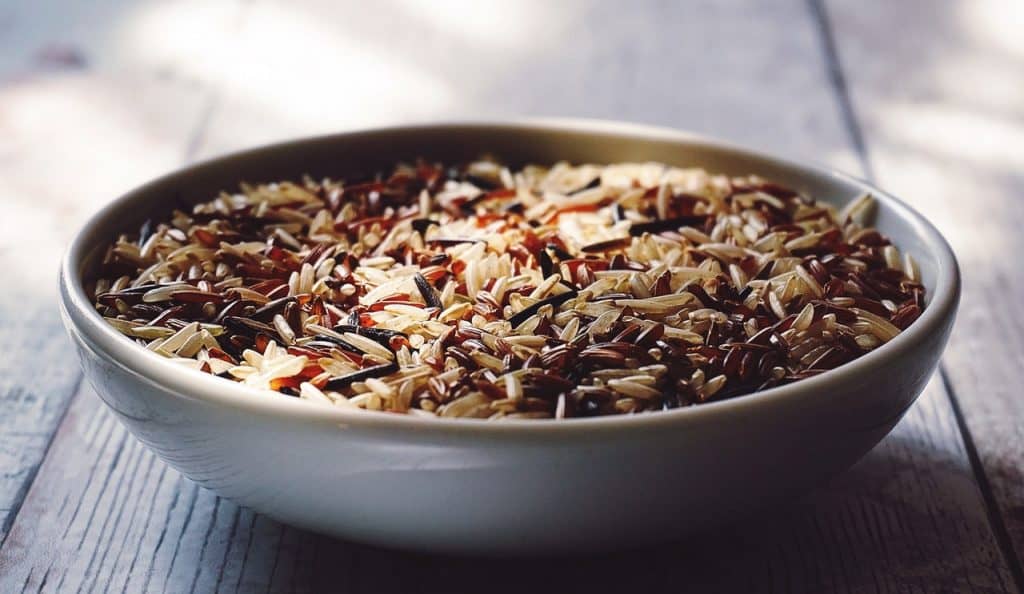Eating whole grains can help you become a more conscious eater, but how do you know whether a product is a whole grain? Find out what to look for and why whole grains are so healthy for both you and the planet. Learn more about how whole grains can help you lose weight and be healthier.

Any food that you eat has a significant influence not only on your body but on the environment itself. Health and moral issues aside, eating food that are higher up on the food chain – like beef, chicken, and pork – requires more energy to process and releases more pollution into the air.
Becoming a conscious eater is like a treasure map with no end. You must continually educate yourself to maintain and expand your efforts. However, eating more foods that are lower on the food chain can help offset these effects.
Why Whole Grain Foods are Unsung Heroes?
Whole grains are easier on the environment than foods that are higher up on the food chain. Also, eating foods like whole-grain bread or whole-grain rice can help reduce your risk of diabetes, heart disease, obesity, and your overall risk of death.
Why are these foods so good for you?
- They’re high in dietary fiber, which is essential for digestive health, cholesterol, and blood sugar regulation.
- They’re rich in nutrients, like niacin, riboflavin, thiamin, folate, magnesium, iron, and selenium. These nutrients play an essential role in carrying oxygen through the blood, forming new cells, regulating the thyroid, and maintaining your immune system.
Grains are low in fat and calories while being rich in nutrients and fiber. The fiber in these foods helps you feel fuller for longer, making them an excellent choice for people who are trying to lose weight.
Tips for Buying Whole Grains
How can you be sure that your whole grain pasta is completely whole grain? What types should you buy, and from where? Here are some tips for purchasing whole-grain foods from the store.
- Look for the Whole Grain Stamp
To make sure that your whole-grain cereal or whole grain flour is genuine, look for the Whole Grain Stamp.
There are three types of stamps:
- 100% stamp: All of the grain is whole and contains at least 16 grams per serving.
- 50% stamp: At least 50% of the grain is whole and contains at least 8 grams per serving.
- Basic stamp: Contains a significant amount of whole grains, but is mostly refined grains. Must contain at least 8 grams per serving.
The Whole Grain Stamp is reassurance that you’re getting whole grains, and you know how many servings you get with each type of stamp. This makes it easier to be a conscious eater and plan your meals. Buying grains doesn’t have to be a complicated process when you have these stamps to guide you.
2. Buy Local
When you buy local, you support farmers and your community. Contrary to what you may have heard, you can buy grains from local sources. The Whole Grains Council has a map tool that can help you find local authorities for your favourite grains.
When you buy from local farmers, you’re also more likely to get unprocessed products. They don’t have to travel hundreds of miles to a grocery store, so you’re also choosing a more environmentally friendly way to buy your grains.
Oats, brown rice, and wheat are the go-to grains for most people, but the world of grains is vast and filled with variety. Venture outside of your comfort zone to try something new, like:
- Whole grain couscous Farro
- Wild rice
- Triticale
- Teff
- Fonio
- Barley
- Amaranth
- Freekeh
- Quinoa
You can find most of these grains in your local grocery store or health food store. Trying new grains is like going on a treasure hunt. You never know what new flavours and food combinations you’ll discover and fall in love with.
When you’re shopping in the grocery store, you’ll find dozens of flashy labels that may fool you into thinking the product is rich in whole grains when that may not be the case.
When you’re hunting for grains, ignore the following labels:
- Made with whole grains: The product may contain some whole grains, but how much? With this label, you have no idea how much you’re getting. It could just be trace amounts of grains.
- Multigrain: This could mean that the product has a mix of whole, refined, or both types of grains.
- Stone-ground: While it sounds appealing, this label doesn’t tell you anything about the grains it contains, or whether they’re refined. Stone-ground refers to the way the grain was milled – two big stones grinding together.
The world of grains can be intimidating and confusing for newcomers, but relying on trustworthy labels like the Whole Grain Stamp can help you become a conscious eater without feeling frustrated and overwhelmed.
Our Author
This article was written by Thomas Quarry, a businessman who has had a lot of experience dealing with investors. He is currently working on starting his startup based on computer science and marketing solutions. Twice a year, Thomas organizes an expedition to go prey treasure hunt with his colleague.